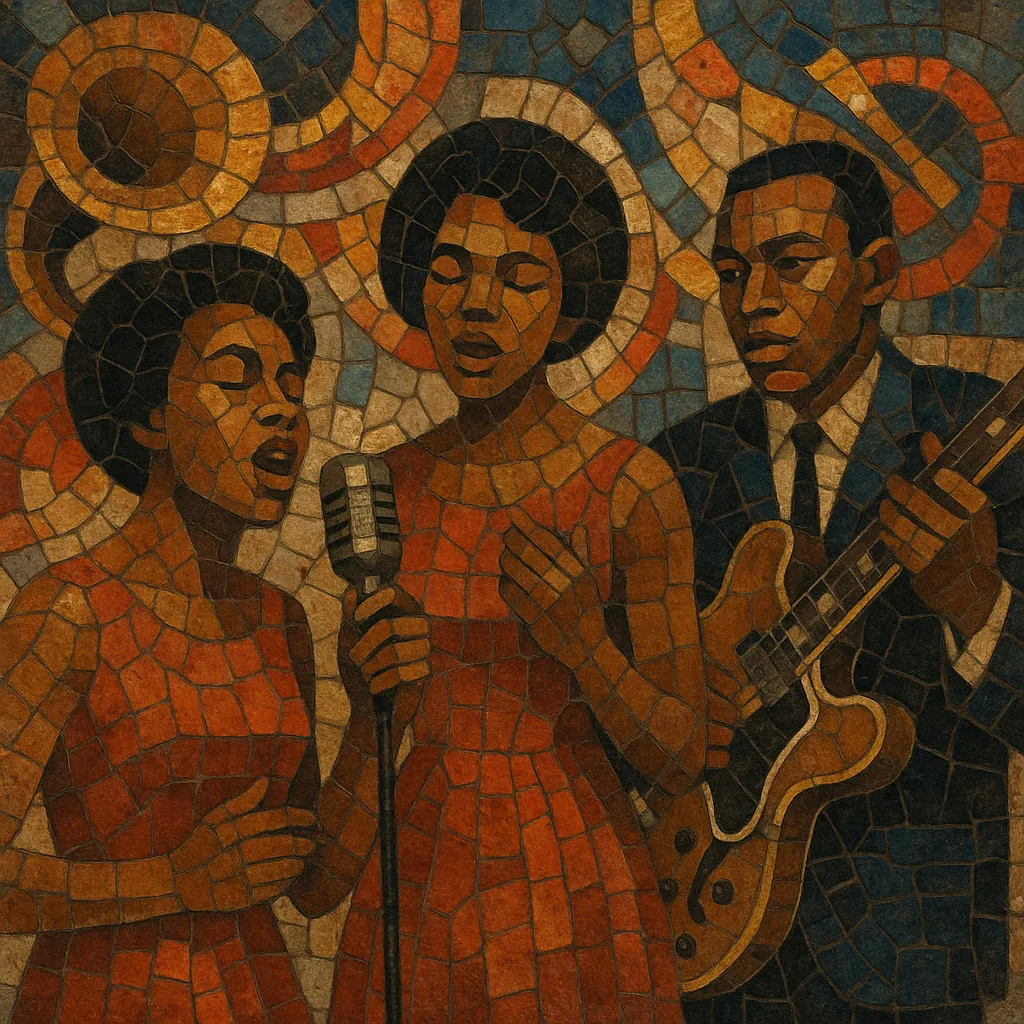Motown (often called the "Motown Sound" or Detroit soul) is a sleek, hook-driven form of soul that fused Black gospel fervor and rhythm & blues groove with pop songwriting craft and radio-friendly production. Born out of Berry Gordy Jr.’s Motown Records in Detroit, the sound emphasized strong melodies, tight vocal harmonies, and a driving backbeat designed for broad crossover appeal.
Hallmarks include tambourine on the backbeat, handclaps, punchy horns and strings, shimmering glockenspiel or vibraphone accents, and highly melodic bass lines. Lead vocals often deliver heartfelt, universal stories of love and heartbreak, answered by responsive background harmonies. Songs typically use concise verse–chorus forms, bridges, and modulations to keep energy rising.
Behind many hits was the Motown house band, the Funk Brothers, whose danceable grooves powered an assembly-line approach to songwriting and production—resulting in an unmatched run of chart-topping records that reshaped the sound of American pop.
Berry Gordy Jr. founded Motown Records in 1959 in Detroit, Michigan, establishing the famed Hitsville U.S.A. studio. Drawing on rhythm & blues, gospel’s call-and-response, and pop’s concise songcraft, Motown pursued an intentional crossover strategy. Songwriting and production operated like an assembly line, with teams (notably Holland–Dozier–Holland, Smokey Robinson, Ashford & Simpson, and later Norman Whitfield) crafting material tailored to artists and radio.
The house band, the Funk Brothers, laid the rhythmic foundation: tambourine on the backbeat, crisp drums, piano and guitar in tight interlock, and James Jamerson’s melodic, propulsive bass. Early signature acts included The Miracles, The Marvelettes, Martha & The Vandellas, The Supremes, The Temptations, and the Four Tops.
Motown implemented rigorous “quality control” meetings, artist development (etiquette, choreography, diction), and a focus on universally relatable lyrics. The label became a hit factory: The Supremes’ run of number ones, The Temptations’ sophisticated harmonies and choreography, and Martha & The Vandellas’ dance anthems defined the era. Motown’s sound spread globally, energizing scenes such as the UK’s Northern Soul.
As the 1960s progressed, Motown’s music incorporated deeper themes reflecting the times. Marvin Gaye’s "What’s Going On" (1971) fused Motown polish with social commentary; Stevie Wonder’s 1970s albums expanded harmonic and sonic palettes. In 1972, Motown moved operations to Los Angeles, growing into film and television while continuing to place major hits (e.g., The Jackson 5, The Commodores).
Motown codified a pop-soul blueprint: memorable hooks, immaculate arrangements, and danceable grooves with emotional immediacy. Its influence radiates through disco, Philly soul, quiet storm, contemporary R&B, and mainstream pop production practices. Beyond sound, Motown set a business and artist-development model that reshaped the music industry and helped integrate American popular culture.


